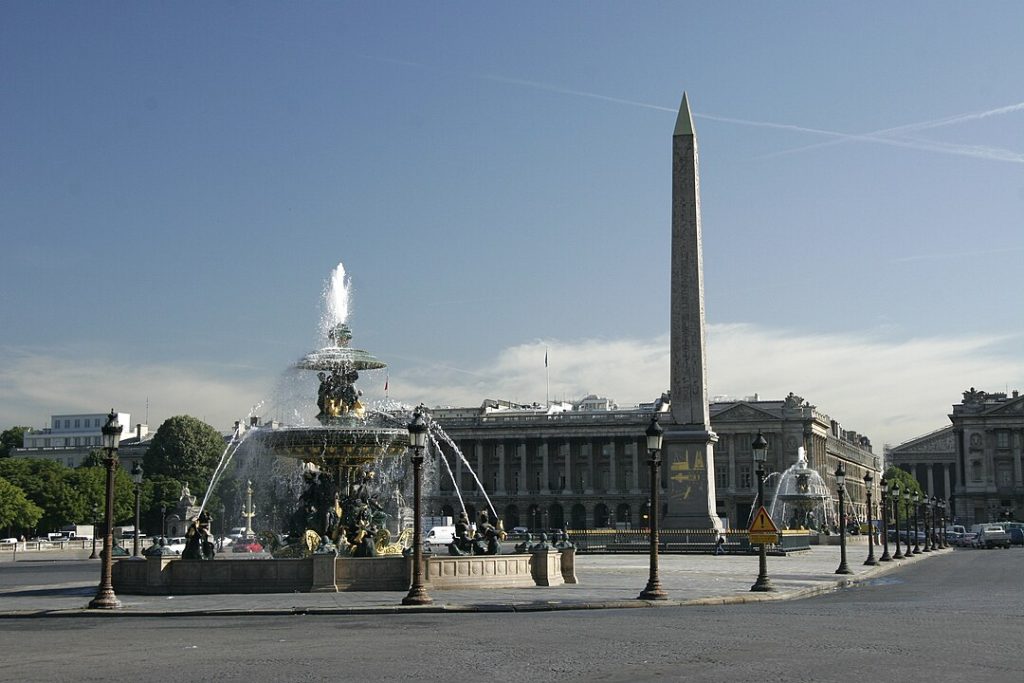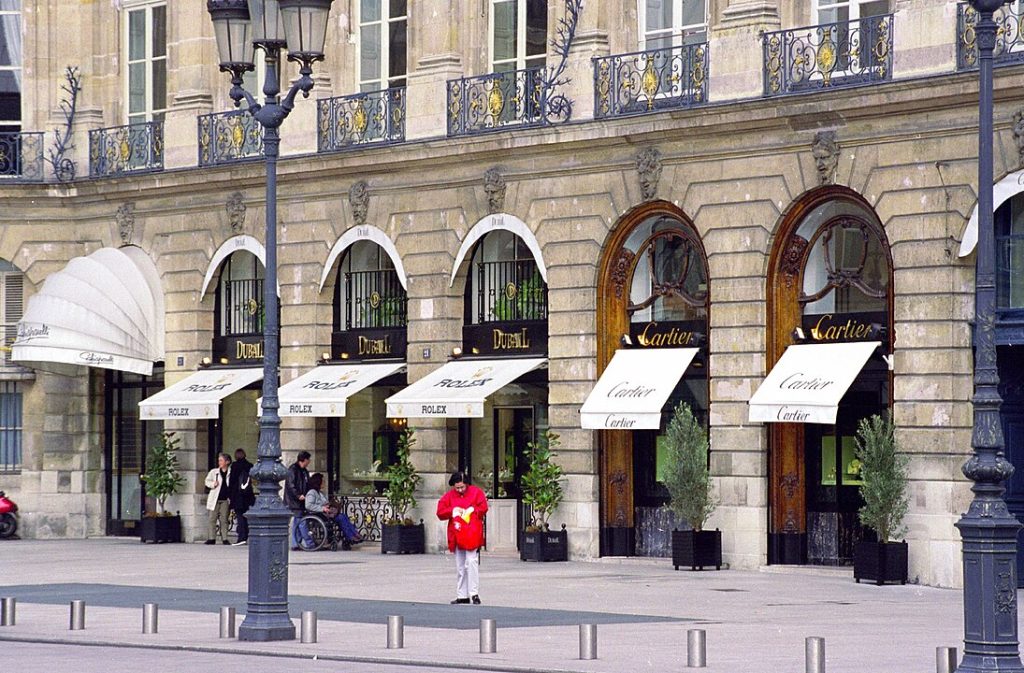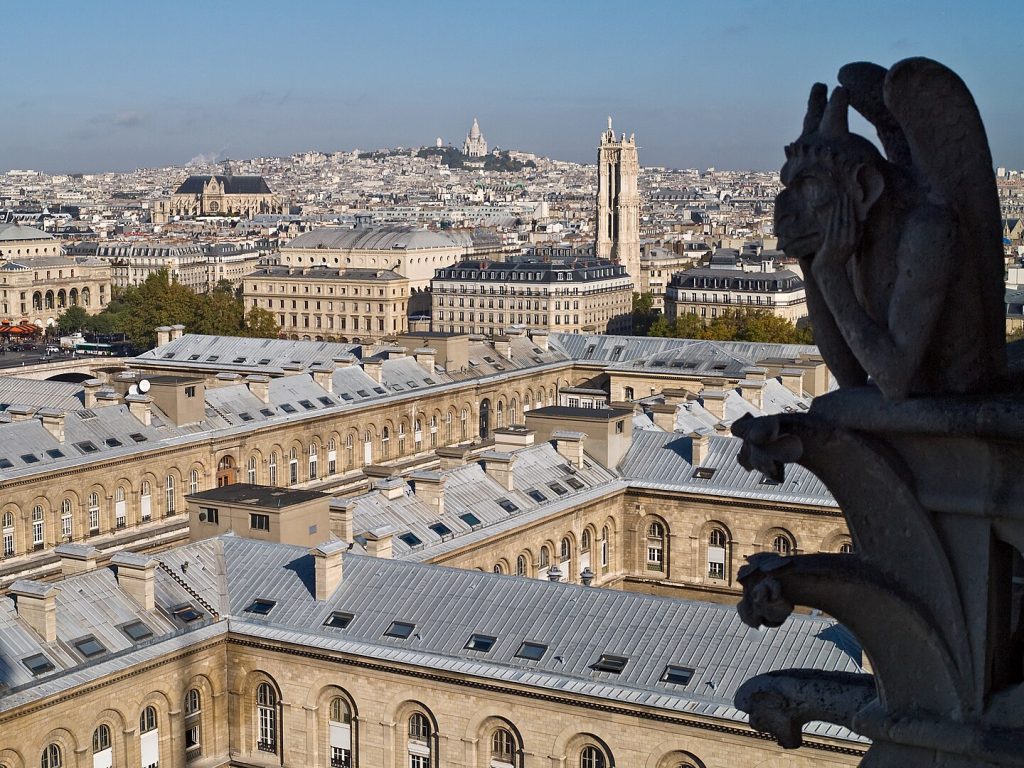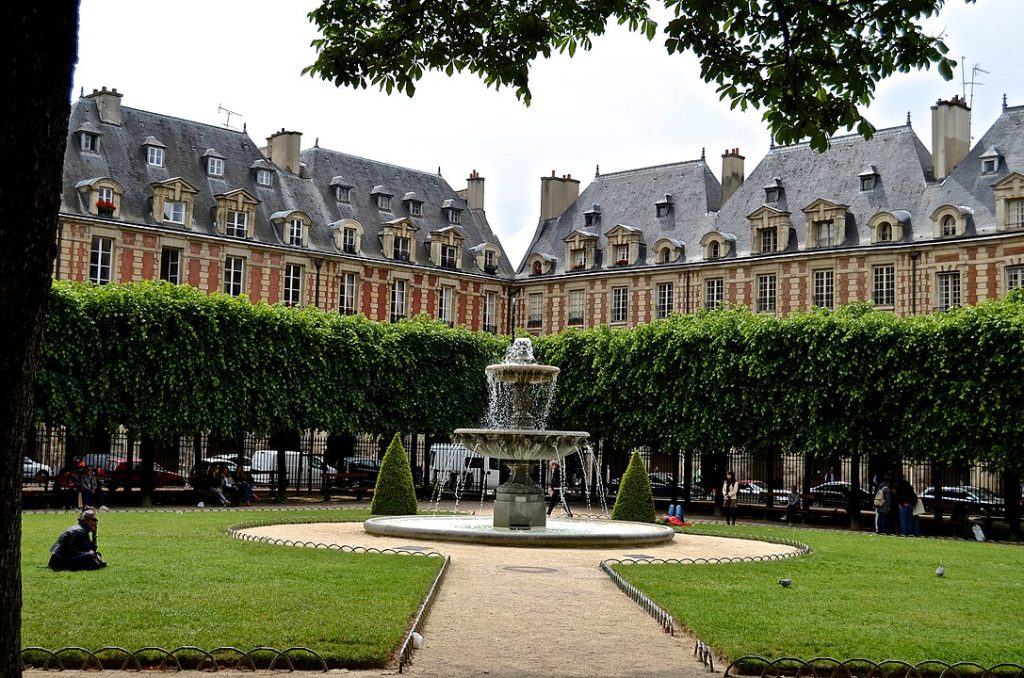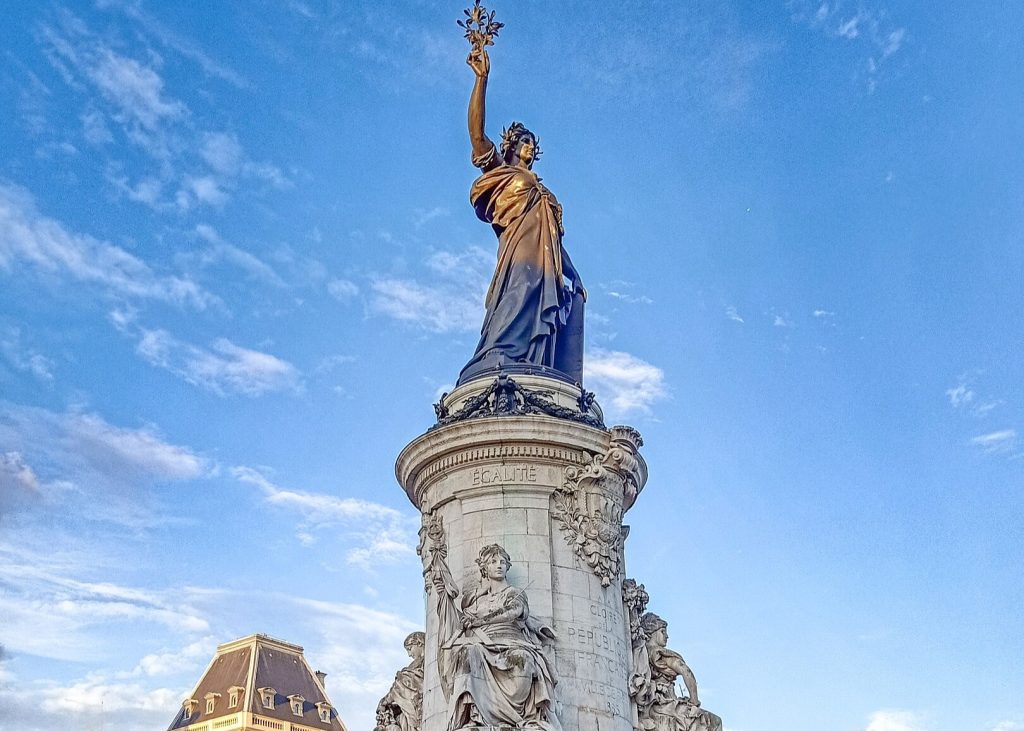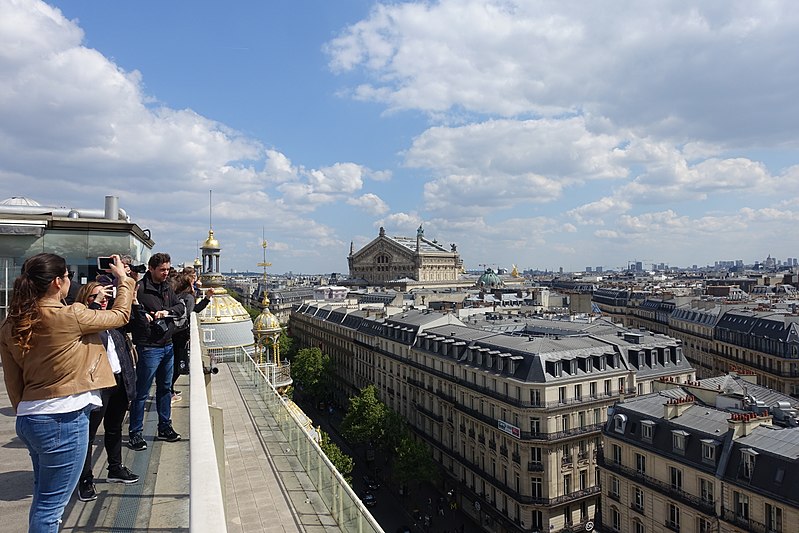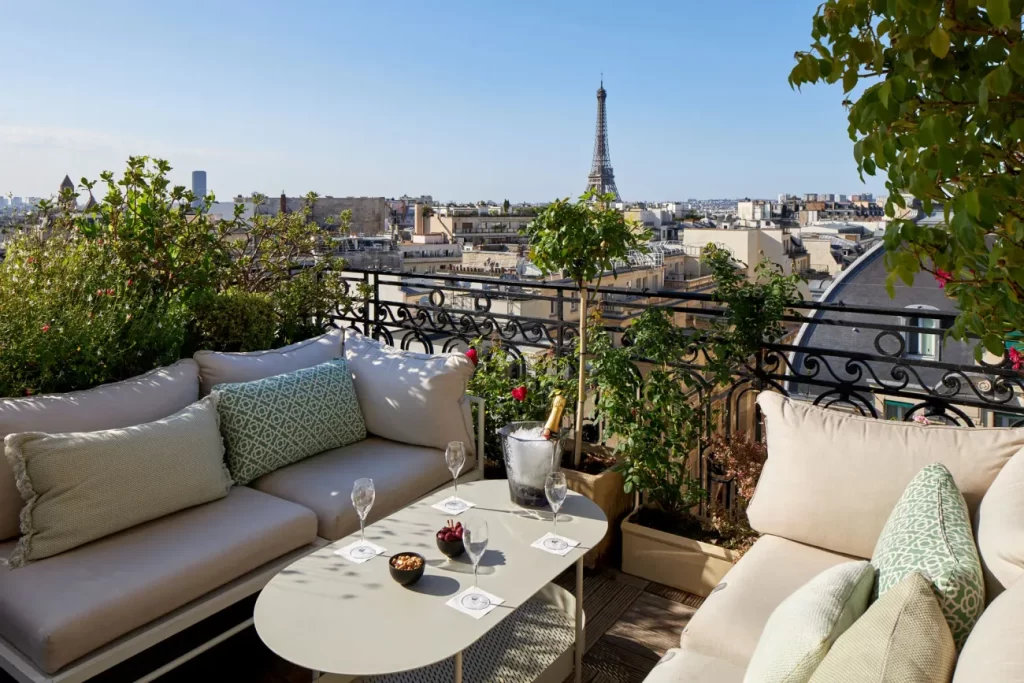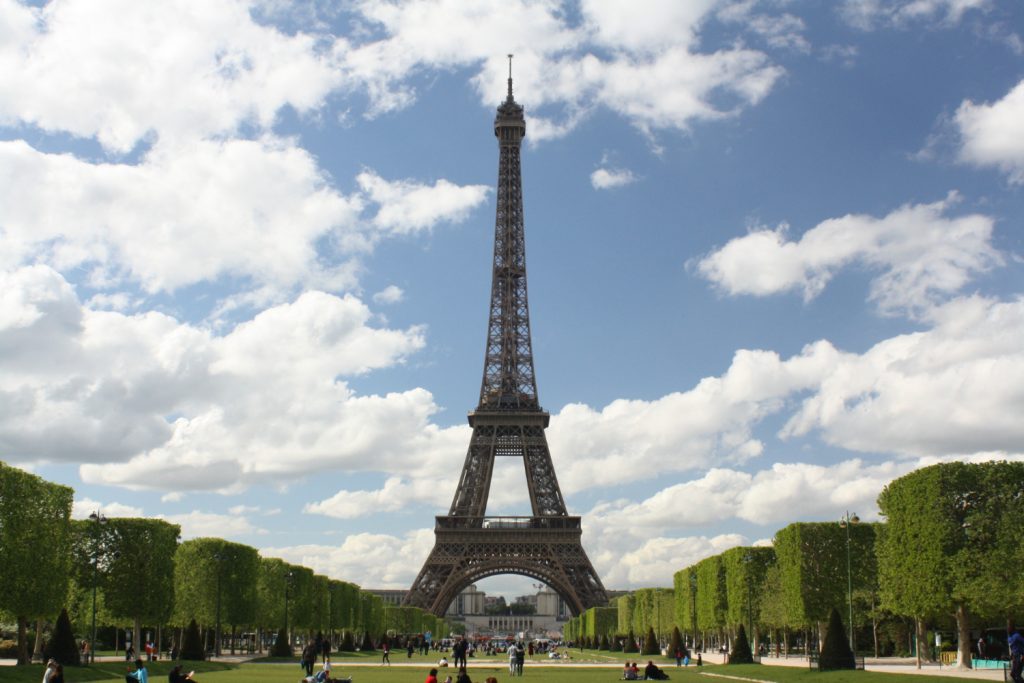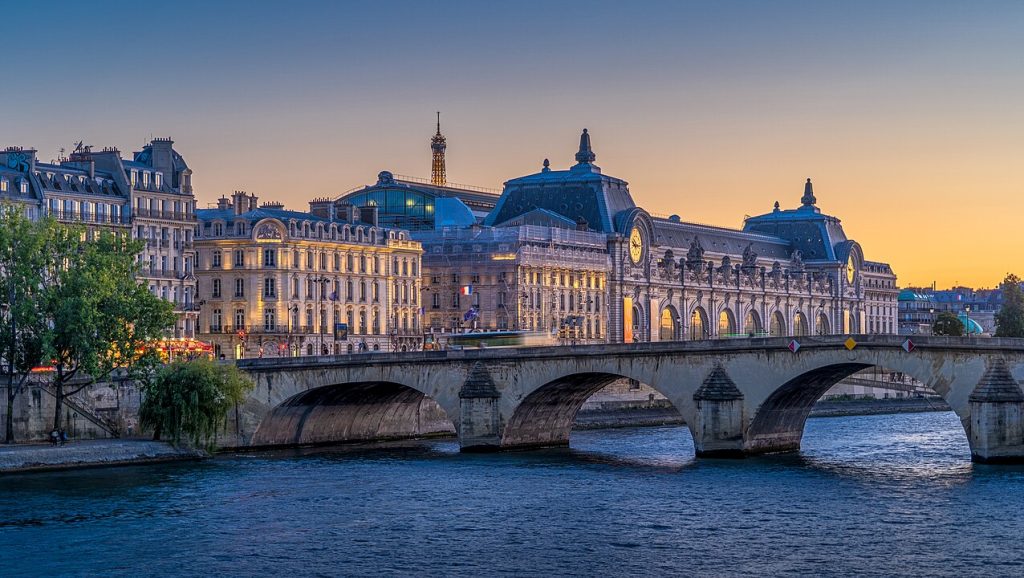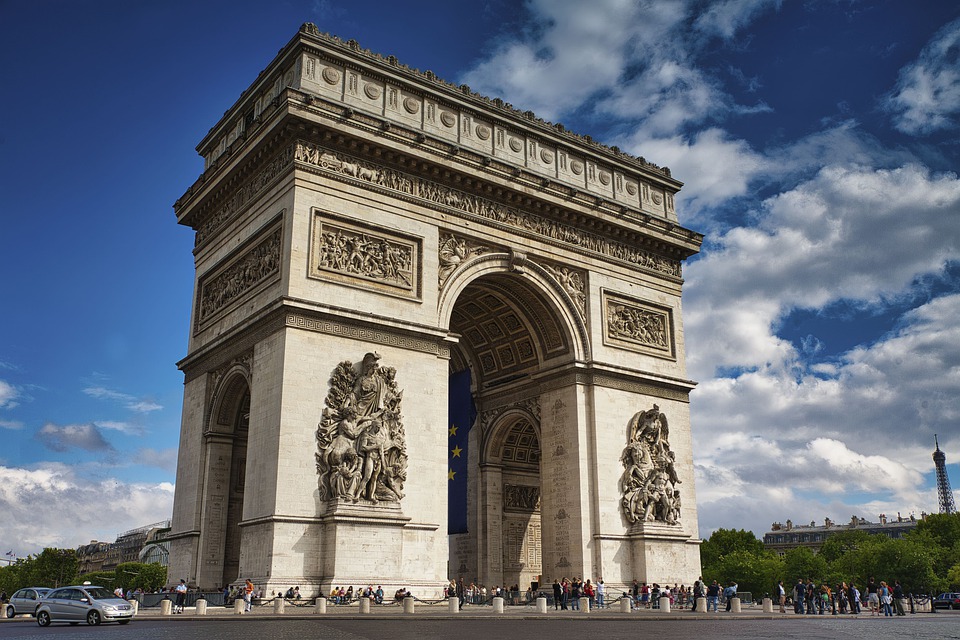- 1️⃣ Introduction
- 2️⃣ Birth of an icon: the construction of the Eiffel Tower
- 💠 World Exhibition 1889
- 💠 Gustave Eiffel and his vision.
- 💠 Controversy that could have stopped it
- 3️⃣ Admiration and criticism: the first decades
- 💠 "Iron Lady" in the eyes of Parisians
- 💠 First technological applications
- 💠 From radio station to viewpoint
- 4️⃣ Saved by the storms of history
- 💠 World War I and World War II: the tower as a guardian of Paris
- 💠 German occupation and the swastika at the top
- 💠 Symbol of resistance and survival
- 5️⃣ Eiffel Tower in the modern world
- 💠 Renovations and technical improvements
- 💠 Millions of tourists and records of popularity
- 💠 Light shows and special events
- 6️⃣ An object of culture, art and pop culture
- 💠 Tower in films, literature and music
- 💠 Inspiration for artists and creators
- 💠 Souvenirs, reproductions and "copies" around the world
- 7️⃣ Urban Views
- 💠 Location and impact on the Paris skyline
- 💠 Relationship with the environment - Champs de Mars and the Seine
- 💠 Symbol of metropolitanism and romanticism
- 8️⃣ Controversy and reflections
- 💠 Criticism of commercialization
- 💠 Debates on accessibility and ecology
- 💠 Question: does the Tower still inspire?
- 9️⃣ Summary
- 📍 Attractions in the area
- 🔗 Articles similar in subject matter
- 🔥 Most popular articles in the last week
- 💬 Opinions
1️⃣ Introduction
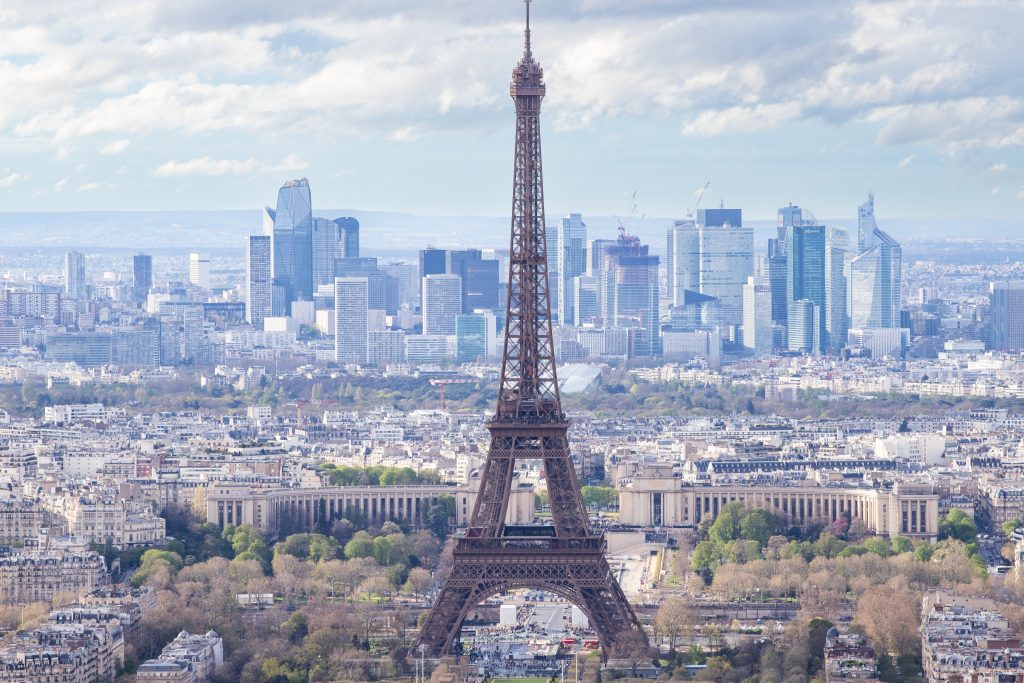
This is one of those designs that is recognized immediately - Even without a description. Eiffel Tower It is not only the most famous point of Paris, but also the A global symbol of romance, innovation and... controversy. For more than 130 years looks down from on high at city of lights, attracting millions of tourists, couples in love, artists and casual onlookers from around the world.
Although today it seems inherent Parisian landscape, its history did not start easily. It was supposed to be temporary, was mocked, yet over time it has become the heart of Paris.
🔍 This article is a story about how the steel giant, which had disappear after 20 years, became an icon for the ages.
2️⃣ Birth of an icon: the construction of the Eiffel Tower
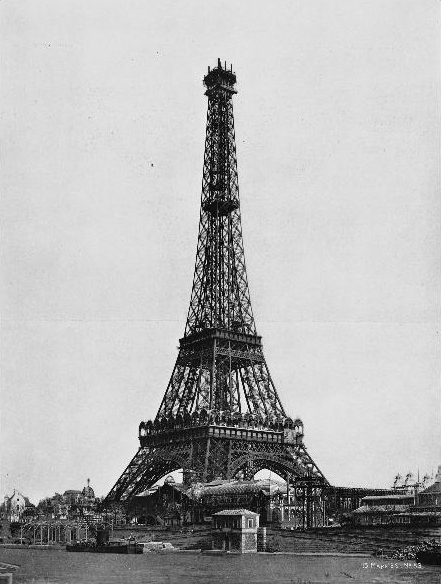
💠 World Exhibition 1889
At the end of the 19th century, Paris was getting ready to celebrate the centenary of the French Revolution. On this occasion, a World Exhibition was planned to show the world the French technical and cultural power. The organizers wanted to create something surprising and unique - a structure that would become a symbol of the era. Thus was born the idea of building a tower with a height of over 300 meters, which was to be the tallest building in the world.
💠 Gustave Eiffel and his vision.
Although the authors of the concept were engineers Maurice Koechlin i Émile Nouguier, it is Gustave Eiffel - an experienced bridge builder - took their idea and gave it real shape. He believed that modern technology could not only be useful, but also aesthetically pleasing. Thanks to his determination, work began in 1887 and lasted just 26 months - The pace of construction was impressive for the realities of the 19th century.
More than 18 thousand iron elements, used 2.5 million nits, and the whole thing was designed and assembled without the use of cranes that we would consider necessary today. It was a true engineering masterpiece.
💠 Controversy that could have stopped it
From the very beginning, the project aroused emotions. Many Parisians - especially representatives of the artistic community - believed that the metal tower would destroy the elegant character of the city. Newspapers published letters of protest, and one of them called the structure "a useless and monstrous machine".
Guy de Maupassant, a writer and major critic, claimed that he eats lunch every day at the tower restaurant - because it The only place in Paris from which it cannot be seen.
And yet - the tower was built. And although it was supposed to be only a temporary attraction, over time it became a an integral part of the city, as well as an enduring symbol of courage, progress and modernity.
3️⃣ Admiration and criticism: the first decades
🗽 A square that speaks with the voice of freedom
👉 Place de la République - history, protests and symbolism

💠 "Iron Lady" in the eyes of Parisians
After opening in 1889 The Eiffel Tower has generated real excitement - both enthusiasm, as well as reluctance. For some, she was symbol of modernity, for others - "giant crane" spoiling the city's classical skyline. Critics considered it too austere, cold, "inhuman", and even vulgar.
Over time, however, opinions began to change. The tower not only did not collapse, as pessimists had predicted, but has become increasingly popular with locals and artists. Parisians began to call her fondly "Iron Lady". - a term that still underscores its unique presence in the heart of the city.
💠 First technological applications
Just a few years after its opening, it became clear that the tower could serve much more functions than just a tourist attraction. W 1903 The first radiotelegraph station, which played a key role in the development of communications.
During World War I The antennas from the tower allowed, among other things, to intercept German signals, which had real military significance. In this way technological significance saved the structure from planned demolition - after all, it was only supposed to stand until the 1909.
💠 From radio station to viewpoint
Meanwhile, the tower was becoming more and more available to visitors. Elevators - although primitive by today's standards - made it possible to reach higher levels. Over time, they were built here restaurants, overlooks, and even offices of scientists and meteorologists.
The Eiffel Tower has thus gained second life: not only as an engineering marvel, but also A place for experience, observation and daily use. It was in this first decade that it began to evolve into something more than a controversial project - a began to become an icon.
4️⃣ Saved by the storms of history
🌿 Tranquility in the heart of Le Marais
👉 Place des Vosges - the oldest square in Paris and a hidden gem
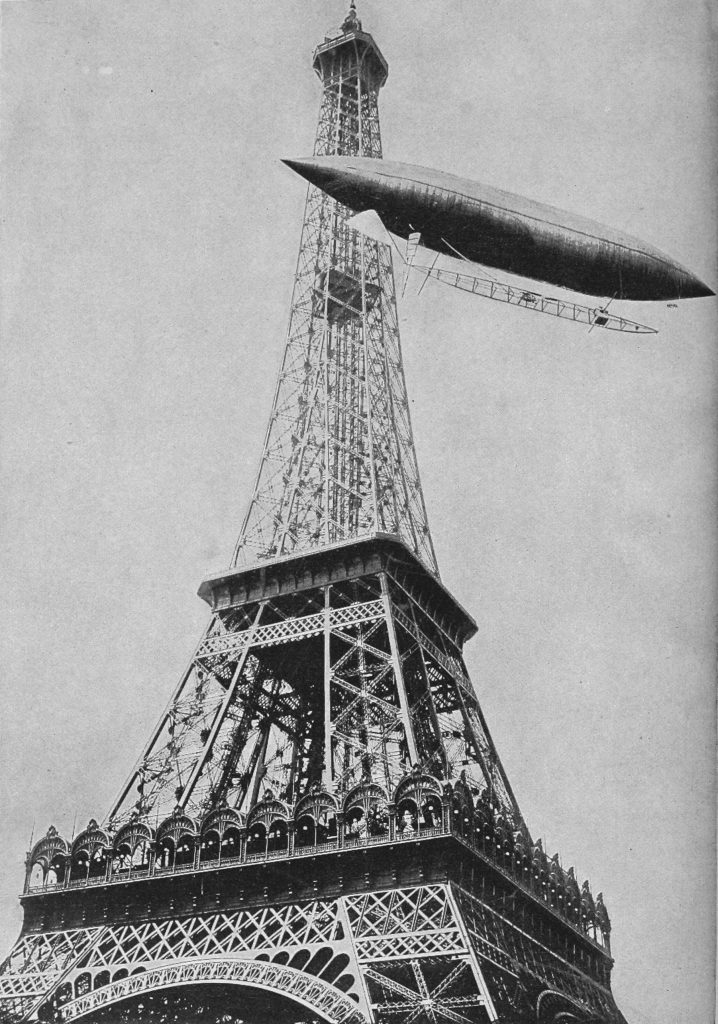
💠 World War I and World War II: the tower as a guardian of Paris
During World War I The Eiffel Tower played a much more important role than expected. Thanks to the telegraph station installed on it, it was possible to large-scale military communications. In 1914, with its help, it managed to intercept and disrupt German orders, which had an impact on the French victory at the Marne.
It is military significance of the construction made it avoid the demolition planned for 1909. It transformed from a symbol of the exhibition into a strategic communication point - and in the eyes of many French people it began to gain new meaning.
💠 German occupation and the swastika at the top
During World War II, after the Germans entered Paris in 1940, the tower was closed to the public. At its top hung a huge flag with a swastika, but it was so big that.... dropped after a few hours due to wind.
The occupation authorities planned to dismantle the tower and transport it to Germany, but the project remained a dream. Interestingly, Frenchmen cut elevator power cables, so that Hitler - if he wanted to climb to the top - would have had to do it on foot. According to some sources, he chose not to do it at all.
💠 Symbol of resistance and survival
Throughout the occupation, the Eiffel Tower stood, silent but meaningful. It was not destroyed, it was not used for propaganda purposes - it survived almost intact.
After the liberation of Paris in 1944, it was reopened to the public. In the postwar era, it was already more than just a structure - has become a symbol of resilience, national pride and continuity of history. Its survival was a reminder that even in the most difficult times, identity and dignity can be preserved.
5️⃣ Eiffel Tower in the modern world
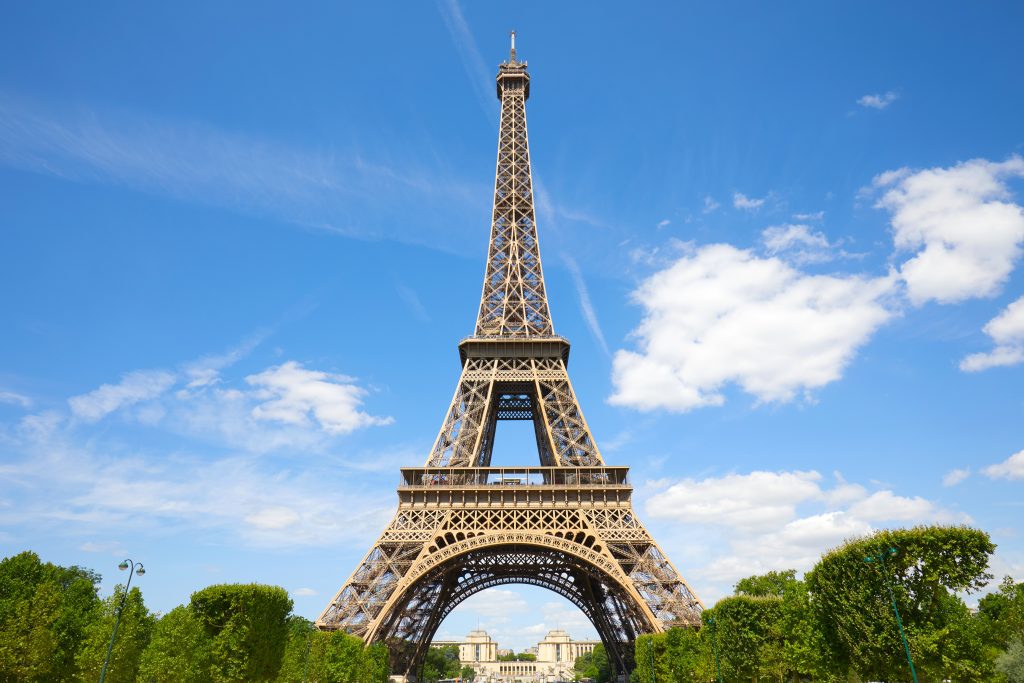
💠 Renovations and technical improvements
Although the late 19th century structure is still impressive, The Eiffel Tower is constantly undergoing upgradesto meet the demands of the 21st century. Since the 1980s, its structure has been regularly strengthened, elevators replaced, new fire protection systems installed and energy efficiency improved.
The tower is also regularly painted - every 7 years, to protect it from corrosion. Each renovation uses about 60 tons of paint. The work is complicated and takes up to a dozen months, but it preserves the original character of the building.
💠 Millions of tourists and records of popularity
The Eiffel Tower is one of the The most visited paid tourist attractions in the world. Annually, it attracts more than 6 million people - despite ever-increasing ticket prices and the need for advance reservations.
For many tourists A visit to the tower is a must in Paris. The view from the top is memorable, and the structure itself - seen up close - is even more impressive than in photos. With three levels, restaurants, observation decks and exhibitions, each visit can look different.
💠 Light shows and special events
Since 2000, the Eiffel Tower at night flashes with a thousand twinkling lights, which turn it into a real spectacle every hour. The illuminations are designed to emphasize the elegance of the structure and not disturb the urban landscape.
The tower also often participates in special events: it is illuminated in the colors of national flags, dimmed as a gesture of solidarity, and sometimes becomes a screen for important social and political messages. As a result, it is still alive - not only as a monument, but also as a as the voice of the modern world.
6️⃣ An object of culture, art and pop culture
🎨 A district of artists and dreamers
👉 Montmartre - bohemia, Moulin Rouge and the soul of old Paris
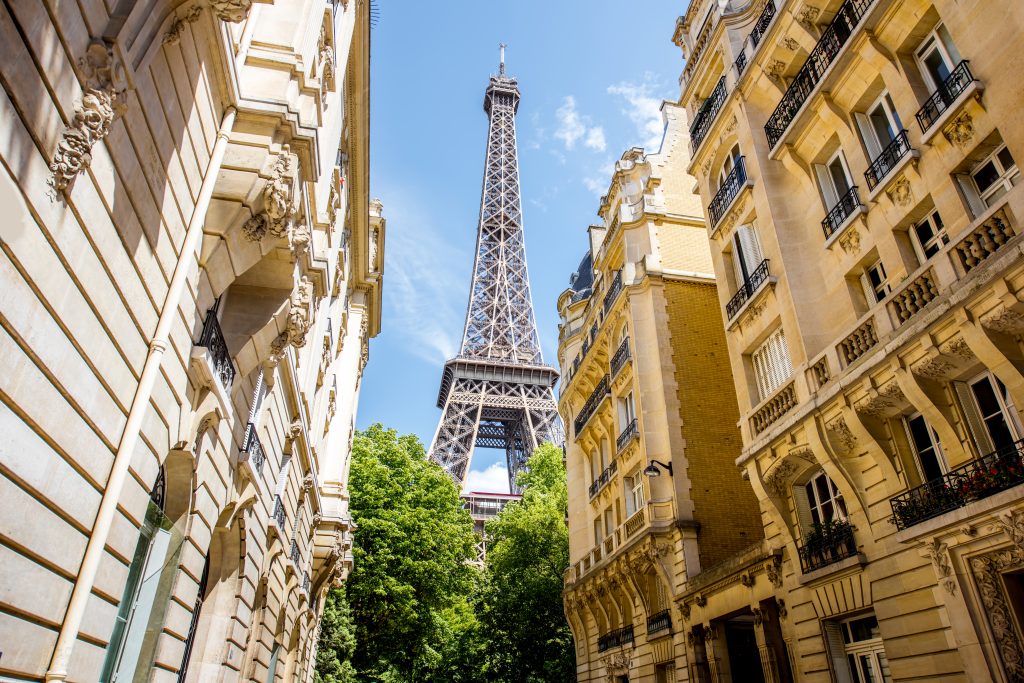
💠 Tower in films, literature and music
The Eiffel Tower appears in countless films - both French and Hollywood. Sometimes as a backdrop for love scenes, other times as the centerpiece of the plot. It has appeared in, among others. Inception, The Da Vinci Code, Ratatuju, Lethal Weapon 4, as well as in many romantic comedies.
In literature, it is sometimes a symbol of dreams, longing or modernity, and in songs - a backdrop for emotions. It is not just a part of the landscape, but the hallmark of all of Paris, immediately evoking associations with romance, culture and elegance.
💠 Inspiration for artists and creators
From the very beginning, the tower has fascinated artists - both established and avant-garde. It was drawn by Impressionists, depicted by Cubists, photographed by Modernists. For the Dadaists and Surrealists, it was a symbol of the deconstruction of form, and for architects - a challenge and a point of reference.
To this day it is a motif that appears in applied graphics, posters, murals or street art. It is difficult to find another object that is equally recognizable and at the same time open to interpretation.
💠 Souvenirs, reproductions and "copies" around the world
The Eiffel Tower has become a pop culture icon. Its miniatures can be found on keychains, mugs, T-shirts or jewelry. It is one of the most reproduced architectural objects in the world - not only in the form of souvenirs, but also full-size replicas.
The tower's smaller "sisters" are located in Las Vegas, Tokyo, Shenzhen, Sofia and Lahore, among others. This proves that Its symbolism has gone far beyond the borders of France - today belongs to the whole world.
7️⃣ Urban Views
💠 Location and impact on the Paris skyline
The Eiffel Tower was erected in the western part of the city center, on the Champs de Mars - a huge open square that has served military and public purposes for centuries. Thanks to this location, the tower not only dominates the space, but also fits naturally into the urban layout of Paris.
Visible from almost every point in the city, it has always been an architectural counterpoint to the historic buildings. Today it is difficult to imagine the Paris skyline without its distinctive silhouette.
💠 Relationship with the environment - Champs de Mars and the Seine
The immediate surroundings of the tower play an important role in its perception. On one side - the the vast Champs de Mars, giving space for relaxation, photography and picnicking. On the other - Seine, over which runs the Jena Bridge, which connects the tower to the Trocadéro district and viewing terraces.
Such a composition means that the tower is not "squeezed" into a dense development, but has the space to breathe - Which further enhances its monumental character. It is an example of well thought-out integration of modern form into the traditional urban fabric.
💠 Symbol of metropolitanism and romanticism
Although it originated as an industrial structure, over time it came to symbolize something more. For some, it is an icon of modern Paris, a metropolis open to the world and progress. For others - romantic point of reference, an ideal place for an engagement, a walk or a moment of admiration of the city.
The Eiffel Tower thus combines what rarely goes hand in hand: industrial character and emotional significance, the coolness of steel and the warmth of memories. Such a balance makes it against other urban dominants - it not only stands out, but simply moves.
8️⃣ Controversy and reflections
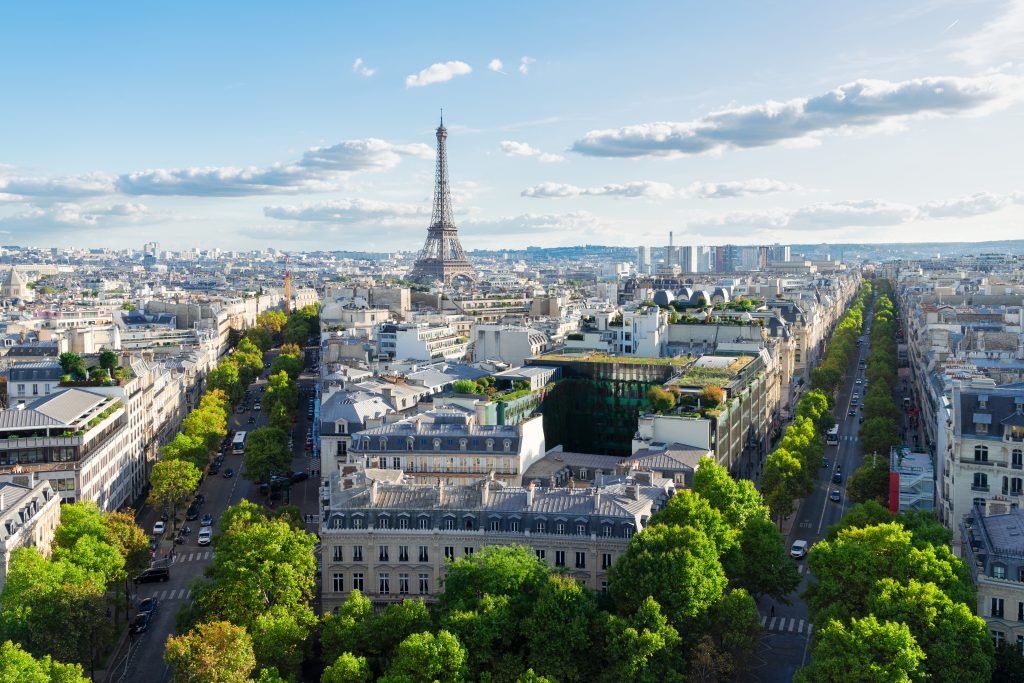
💠 Criticism of commercialization
Although the Eiffel Tower attracts millions of tourists and generates huge revenues, there is no shortage of criticism. For many Parisians, it has become a a symbol of the tourist masses - a place where romance disappears under the onslaught of crowds, souvenir magnets and queues.
Some have accused the city government of treating the tower primarily as a source of profits, rather than cultural heritage in need of sensitive treatment. Questions arise: where does the promotion end and the distortion of the original spirit of the place begin?
💠 Debates on accessibility and ecology
In recent years, there has been a lot of talk about The need to make the tower more accessible and environmentally friendly. Green solutions are being introduced - such as LED lighting, waste segregation and plans to install solar panels.
Nevertheless, there are claims that tickets are too expensive, and many people-especially residents of Paris. has not visited the tower for years, because they feel it was not designed with them in mind. As a result, a monument that is an icon of the city is sometimes More accessible to tourists than to Parisians themselves.
💠 Question: does the Tower still inspire?
After more than 130 years of existence, a natural question arises: Does the Eiffel Tower still inspire awe, or has it become just a backdrop for selfies? For many it is still a magical place, but for others - too familiar, too predictable, too "photographed."
Yet despite these reservations, the tower still has power. It moves, impresses, attracts. And perhaps it is precisely the fact that it is not perfect - that there is debate around it, that not everyone likes it - that makes it a true symbol: alive, changing, still relevant.
9️⃣ Summary
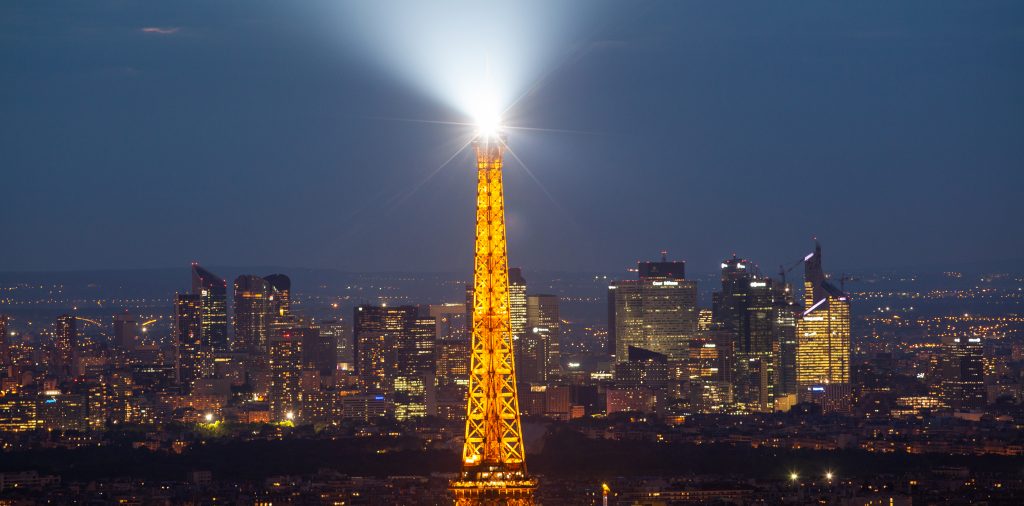
The Eiffel Tower is more than a steel structure - it's a living history, iconic symbol i witness to the epochs. It was supposed to be a temporary attraction, but it has stayed forever. In its 330 meters it houses both engineering precision and emotional value that cannot be measured.
For more than 130 years, it has gone from controversial experiment to object of universal admiration. It has survived wars, crises, social changes and cultural fads. It continues to inspire - architects, artists, lovers and dreamers.
On the one hand, it's a place of crowds, elevator queues and countless photos. On the other - a point of reference, the universal sign of Paris, recognized in every corner of the world. And despite his fame, he does not lose his soul. He still manages to move.
And that's why the Eiffel Tower doesn't just belong to France - it belongs to France. belongs to all.

